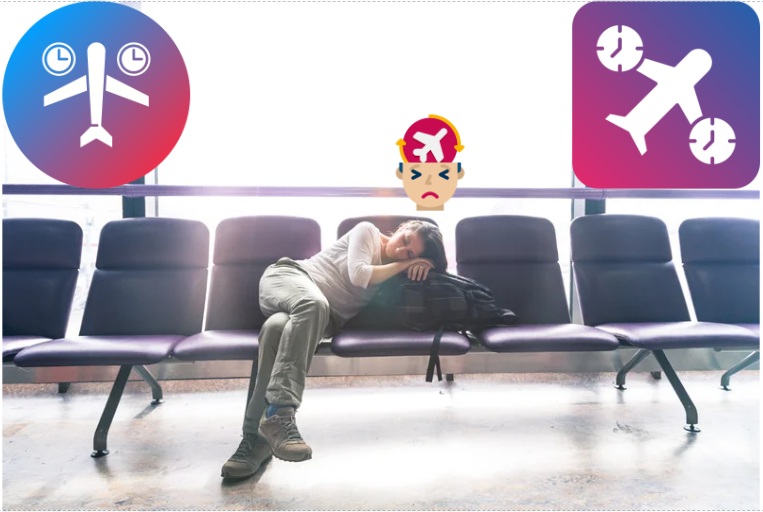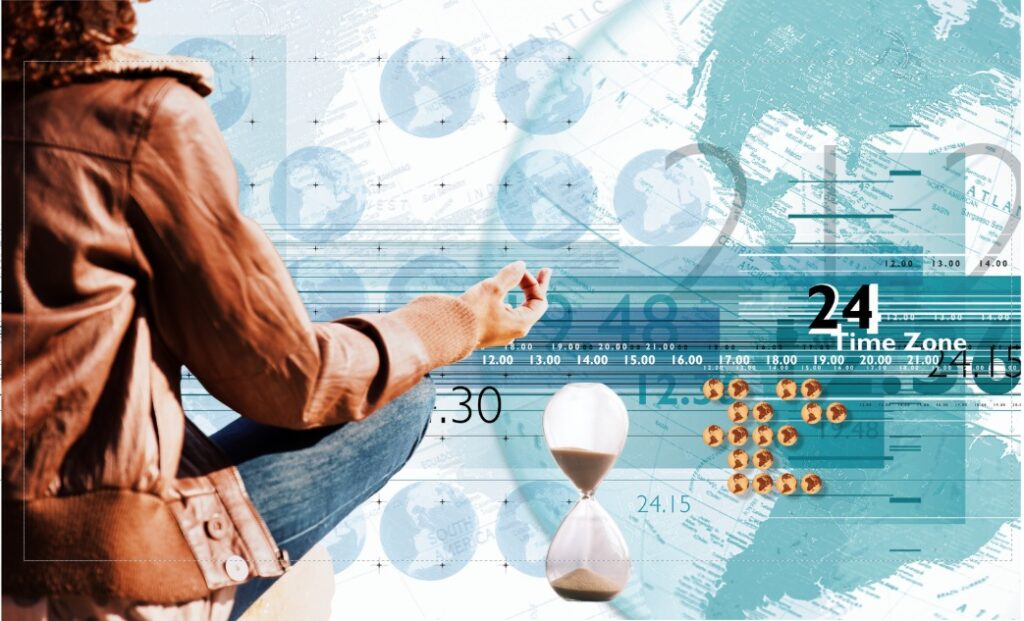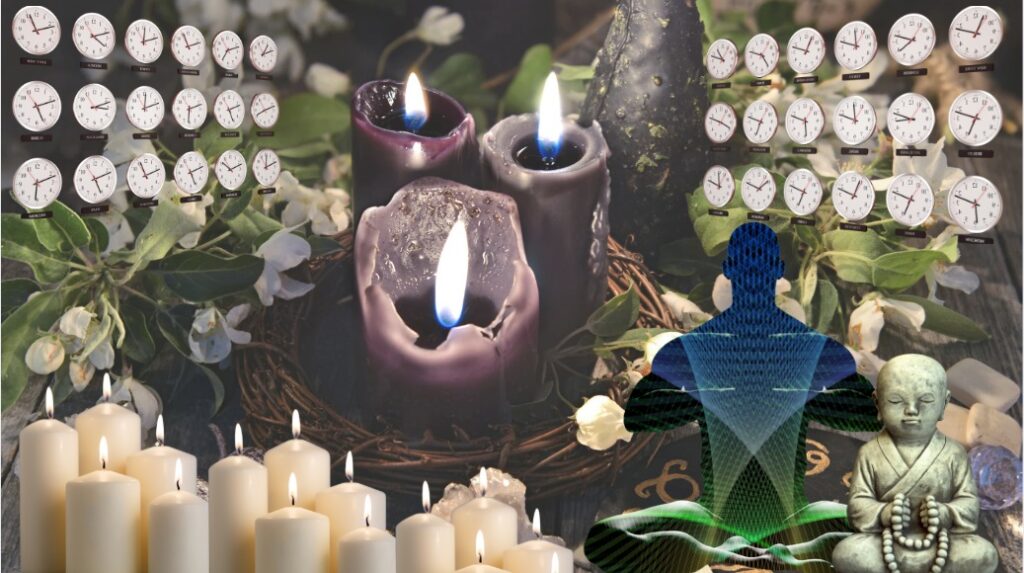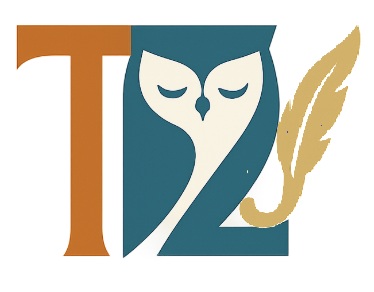What Is Jet Lag and Why Does It Feel So Overwhelming
Picture this: you’ve just stepped off a plane after crossing multiple time zones, your body feels like it’s stuck in quicksand, & your mind is foggy as a London morning. Instead of fighting this disorienting experience, what if I told you there’s a way to turn jet lag into one of the most POWERFUL mindfulness experiences of your life?
Most travelers see jet lag as their worst enemy – something to battle with caffeine, sleeping pills, or sheer willpower. But what if we’ve been looking at it all wrong? What if jet lag is actually a unique opportunity to practice deep mindfulness & connect with our inner selves in ways we never imagined possible? The concept of “Time Zone Meditation” isn’t just about surviving the aftermath of long-distance travel; it’s about transforming a challenging physical state into a gateway for spiritual growth & self-discovery.
This article will guide you through a revolutionary approach to dealing with jet lag. We’ll explore how to use disorientation & fatigue as tools for mindfulness, discover meditation techniques specifically designed for the jet-lagged mind, & learn how to embrace the strange liminal space between time zones as a sacred opportunity for reflection. By the end of this journey, you’ll never look at jet lag the same way again – instead of dreading it, you’ll actually anticipate the unique mindfulness opportunities it presents.

Understanding Jet Lag as a Mindfulness Gateway
Jet lag isn’t just tiredness – it’s a complete disruption of your body’s natural rhythm, known as your circadian cycle. When you travel across time zones quickly, your internal clock becomes confused & can’t keep up with the new schedule. This creates a fascinating state where your mind & body exist in a kind of twilight zone, neither fully awake nor completely asleep. Instead of seeing this as a problem, we can view it as a unique OPPORTUNITY for mindfulness practice.
Think about it: when was the last time you experienced such a dramatic shift in your normal consciousness without using any substances or extreme measures? Jet lag naturally creates the kind of altered state that meditation practitioners spend years trying to achieve. Your usual mental chatter might be quieter, your normal anxieties feel distant, & you’re naturally more present because everything feels so different & strange.
The key is learning to work WITH these sensations rather than against them. When you’re jet-lagged, your defenses are down, your ego is less active, & you’re more open to new experiences & perspectives. This makes it the perfect time to practice mindfulness techniques that might normally feel difficult or forced. Your jet-lagged state can become a teacher, showing you how to be present with discomfort & uncertainty.
Time Zone Meditation: A New Approach to Travel Fatigue
Time Zone Meditation is a specialized practice designed to transform jet lag symptoms into opportunities for mindfulness. This technique focuses on using the disorientation & fatigue as anchor points for awareness, rather than trying to escape or fix them. The practice begins the moment you realize you’re feeling jet-lagged – whether that’s on the plane, in the airport, or in your hotel room.
Start by finding a comfortable position, whether sitting or lying down. Please close your eyes & take three deep breaths, acknowledging that your body is confused about what time it is. Instead of fighting this confusion, welcome it as a temporary visitor. Say to yourself: “My body doesn’t know what time it is, & that’s perfectly okay.” This simple acceptance can immediately reduce the stress & frustration that often accompany jet lag.
Next, do a mental scan of your body, noticing all the strange sensations that come with being jet-lagged. Maybe your limbs feel heavy, your head feels foggy, or you have that weird “floating” feeling. Instead of judging these sensations as bad or trying to make them go away, simply observe them with curiosity. Ask yourself: “What does jet lag actually FEEL like in my body right now?” Treat it like a scientific experiment where you’re gathering data about this unique state of consciousness.
The most powerful part of Time Zone Meditation involves using your confusion about time as a meditation object. Set aside your watch, phone, & any other time-keeping devices for at least 30 minutes. Let yourself exist in a space where time doesn’t matter. Focus on the present moment without any reference to what time it “should” be or what you “should” be doing. This practice can be incredibly liberating & help you realize how much of our daily stress comes from our relationship with time.

Embracing the Liminal Space Between Time Zones
Jet lag creates what psychologists call a “liminal space” – a threshold between your old time zone & your new one where normal rules don’t apply. This in-between state can feel uncomfortable because humans naturally crave certainty & routine. However, liminal spaces are also where the most profound personal growth & insight can occur. Instead of rushing through this transition, Time Zone Meditation encourages you to slow down & explore it fully.
During this liminal period, pay attention to how your perception changes. Colors might seem different, sounds might feel more vivid or muted, & your emotional responses might surprise you. These aren’t signs that something is wrong – they’re evidence that you’re experiencing consciousness from a completely different angle. Many travelers report having profound insights, creative breakthroughs, or emotional releases during their jet lag recovery period when they approach it mindfully.
Use this time to journal about your experience, but don’t worry about making perfect sense. Let your jet-lagged mind wander & write whatever comes up, even if it seems silly or disconnected. Often, the insights that emerge from this practice are more honest & authentic than what we might produce in our normal, fully alert state. The key is to treat this liminal space as sacred time rather than lost time.
Consider asking yourself deeper questions during this period: “What am I leaving behind in my old time zone?” “What do I want to discover in this new place?” “How does it feel to exist between two different versions of ‘now’?” These questions can lead to surprisingly meaningful reflections that go far beyond just dealing with travel fatigue.
✨ Zen Travel Tip
Feeling the weight of jet lag? Sometimes a little support goes a long way.
A calming essential oil blend, a comfortable eye mask, or a lightweight travel meditation cushion can help you ease into mindfulness while traveling.
Practical Mindfulness Techniques for Jet-Lagged States
When you’re dealing with jet lag, traditional meditation techniques might feel too demanding or structured. That’s why it’s helpful to have specific practices designed for your altered state of consciousness. One effective technique is called “Fatigue Surfing” – instead of fighting your tiredness, you learn to ride its waves like a surfer rides ocean swells.
To practice Fatigue Surfing, notice when waves of tiredness wash over you throughout the day. Instead of immediately reaching for caffeine or forcing yourself to stay awake, pause & observe the sensation. Where do you feel the tiredness in your body? Does it start in your eyes, your limbs, or somewhere else? How long does each wave last? By studying your fatigue with genuine curiosity rather than resistance, you transform it from an enemy into a teacher.
Another powerful technique is “Confusion Contemplation.” When your jet-lagged mind feels scattered or confused, use that state as a meditation object. Sit quietly & ask yourself: “What does mental confusion actually feel like?” Notice the physical sensations that accompany mental fog – maybe tension in your forehead, a floating feeling in your head, or difficulty focusing your eyes. This practice helps you develop equanimity with uncertain mental states, which is valuable far beyond just dealing with travel fatigue.
The “Time Dissolution Practice” involves deliberately letting go of all time-related concerns for specific periods. Choose a block of time – maybe 2-3 hours – where you won’t check clocks, follow schedules, or worry about what you “should” be doing based on any time zone. Use this freedom to move slowly, eat when hungry, rest when tired, & generally follow your body’s natural rhythms rather than external time pressures. This practice often reveals how much stress we carry simply from our relationship with time itself.

Creating Your Personal Jet Lag Ritual
Developing a personal ritual around jet lag can transform it from a dreaded experience into something you actually look forward to. Your ritual should begin before you even experience jet lag – ideally, while you’re still on the plane or in transit. This preparation helps set the intention that you’re going to approach your jet lag as a mindfulness OPPORTUNITY rather than a problem to solve.
Start by packing a special “jet lag kit” that includes items specifically chosen for mindfulness practice. This might include a small journal, a comfortable eye mask, earplugs, herbal tea, essential oils, or anything else that helps you feel grounded & present. Having these special items with you creates a sense of ritual & intention around the experience.
When you arrive at your destination & start feeling the effects of jet lag, perform a simple ceremony to mark the beginning of your Time Zone Meditation period. This could be as simple as lighting a candle, taking a ritual bath, or writing a few sentences about your intention to use this experience for growth. The key is to consciously shift from seeing jet lag as something happening TO you to seeing it as something you’re actively engaging WITH for your benefit.
Throughout your jet lag period, maintain small daily rituals that honor your altered state. Maybe you start each day by writing about your dreams (which are often more vivid & strange when jet-lagged), or you end each day with a gratitude practice focused on what you learned about yourself while in this unique state of consciousness. These rituals help you stay connected to the mindfulness potential of your experience rather than just enduring it until it passes.
Long-term Benefits & Integration
The skills you develop through Time Zone Meditation extend far beyond just dealing with travel fatigue. Learning to find mindfulness & peace within discomfort prepares you for many other life challenges. The ability to stay present with confusion, uncertainty, & physical discomfort is are valuable skill for dealing with illness, stress, major life changes, & any situation where you can’t control your circumstances but can control your response.
Many people who practice Time Zone Meditation report that it changes their entire relationship with discomfort & uncertainty. Instead of immediately trying to fix or escape challenging states, they become more curious about them & more confident in their ability to find wisdom within difficulty. This shift in perspective can be life-changing, affecting how you handle everything from work stress to relationship conflicts to health challenges.
The practice also deepens your appreciation for ordinary consciousness. After spending time mindfully exploring the altered state of jet lag, returning to your normal awareness feels fresh & interesting. You might notice that regular waking consciousness, which usually feels so familiar that you take it for granted, actually has its own unique qualities & gifts that become more apparent after experiencing something different.
Consider keeping a long-term journal of your Time Zone Meditation experiences across multiple trips. Over time, you’ll likely notice patterns in what kinds of insights emerge during jet lag, how your relationship with the experience evolves, & what techniques work best for you personally. This ongoing documentation can turn your travel experiences into a valuable spiritual practice that deepens with each journey.

Conclusion: Turning Travel Fatigue Into Transformation
The next time you find yourself battling jet lag, remember that you have a choice. You can see it as an inconvenient obstacle to overcome as quickly as possible, or you can embrace it as a unique opportunity for mindfulness & self-discovery. Time Zone Meditation offers a radically different approach to one of travel’s most common challenges – instead of fighting against your body’s confusion, you learn to dance with it.
The techniques we’ve explored – from Fatigue Surfing to Confusion Contemplation to creating personal rituals – are all designed to help you find wisdom & peace within an experience that most people consider purely negative. By approaching jet lag with curiosity rather than resistance, you transform a temporary discomfort into a doorway for GROWTH & insight.
Remember that mastering this approach takes practice. Don’t expect to become a jet lag meditation expert after just one trip. Each experience with crossing time zones offers new opportunities to deepen your practice & discover different aspects of consciousness. Be patient with yourself as you learn to see jet lag not as a problem to solve, but as a teacher from which to learn.
The ultimate goal isn’t just to make jet lag more bearable – it’s to develop a fundamentally different relationship with all of life’s uncomfortable & uncertain moments. When you can find mindfulness & meaning within the disorientation of changing time zones, you build confidence that you can find peace & wisdom within any challenging situation life presents. Your next flight might just become the beginning of a profound spiritual practice that transforms not only how you travel, but how you live.
🙏 “Subscribe to The Zen Journal and receive gentle mindfulness tips and travel inspiration straight to your inbox.”
